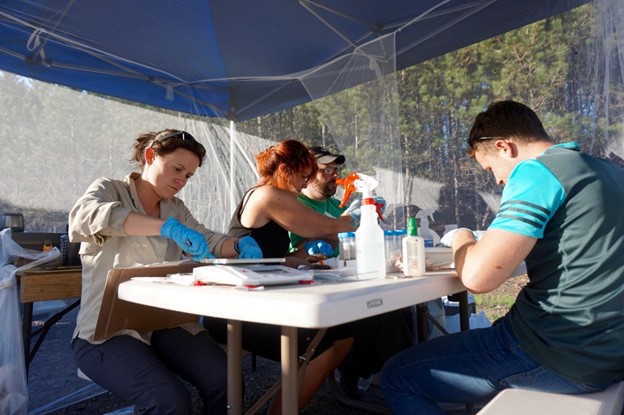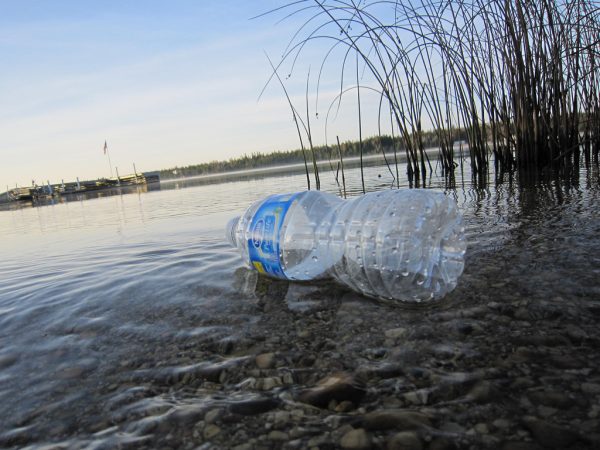
Increasingly, scientists and regulators are concerned about the presence of pharmaceutical pollution in our waterways, including in the Great Lakes region. This contamination has the potential to harm wildlife and make antibiotics less effective. However, more research needs to be done to understand this issue, according to scientists who have studied pharmaceuticals and other contaminants.
How does this research actually work?
Many people in the Great Lakes region like to take advantage of the natural beauty of our lakes and rivers by spending a day fishing. While this can make for a fun and relaxing experience, a traditional fishing rod won’t cut it if your goal is to study a representative sample of a whole fish population.
According to Gerald Ankley, an ecotoxicologist affiliated with the University of Minnesota and the Environmental Protection Agency, scientists often use other fishing methods. These include trap nets and electric shocks. Fish that are shocked, he said, can recover if scientists don’t need them for research.
Ankley and his colleagues are interested in “contaminants of emerging concern” (CECs), a broad category that includes many substances.
“The biggest distinction is to separate them from legacy contaminants that we have known about since the turn of the 20th century, when we really started to realize how big of an issue legacy contaminants are,” said Jessica Deere, a postdoctoral fellow at Emory University who researched fish health on Native American land in northern Minnesota.
Deere said CECs aren’t necessarily new in the environment, but they have historically been “either unknown, unrecognized, or unregulated.”
This category can be vague, according to Mark Ferrey, an environmental scientist at the Minnesota Pollution Control Agency.
“They all get lumped into this catch-all term, ‘contaminants of emerging concern,’ which I’ve gotten away from a little bit, because I think it’s too much of a catch-all,” he said.
If “emerging concern” is too broad, what are some of the specific substances that fall under this umbrella, and why should we care?

1854 Treaty Authority staff electrofishing on a lake in Minnesota. (Photo courtesy of Jessica Deere)
One of the most important categories of CECs is pharmaceuticals. There is an emerging body of research exploring the effects that drugs might have once they get into our lakes and rivers. But how do they get there in the first place? The biggest route, Ankley said, is through wastewater.
“We use the pharmaceuticals, we excrete them in different ways. They go to the wastewater treatment plant and they’re degraded to different degrees,” he said. “Some go away pretty quickly. Some make it through the wastewater treatment plant process.”
Other sources include septic tank leaks or runoff, Ankley said. Rain and snow could also transport pharmaceuticals to lakes, according to Ferrey, which was the implication of a study he conducted with his colleagues.
“When you take medications, you don’t break it down completely. Your body is really, really good at identifying it as being foreign, and it excretes it,” said Ferrey.
Multiple scientists encouraged people to take unused medicine to safe drug disposal locations, rather than flushing it down the toilet.
We know that pharmaceuticals are getting into natural bodies of water. What happens once they get there?
“The challenge here is that the physiology of humans and other vertebrates, like fish, is in many instances very similar,” said Ankley. “So things that act as pharmaceuticals in us, and produce effects we want, can act as drugs in non-target organisms and produce effects that aren’t so good for them.”
Take ethinyl estradiol, for instance. This compound, which humans use as birth control, can disrupt the reproductive systems of fish.
“It works at very low levels,” Ankley said. “In some instances, fish that are in the vicinity of wastewater treatment plants will exhibit this feminization phenomenon. The males will have aspects of females.”
A study conducted in northwestern Ontario, Canada, found that chronic exposure to ethinyl estradiol and similar compounds could lead to population decline among fish.
Ferrey said that antidepressants can affect the reaction times of fish.
“That might affect their predator avoidance ability,” he said.
Not all of pharmaceutical pollution’s harms fall on fish. Bridget Baker is a professor in wildlife ecology and conservation at the University of Florida. She was lead author on a study of CECs in various places between Lake Huron and Lake Erie. The most common type of pharmaceuticals she and her colleagues found were antibiotics. Antibiotic pollution poses risks to humans, as well as animals.
“The biggest concern was whether that might be driving antibiotic resistance in the environment,” said Baker. “One thing we have seen with some of our more recent research is that there is antibiotic resistance genes in the environment.”
When people are exposed to bacteria with antibiotic-resistant genes, it can cause problems for human healthcare.
“It becomes harder to treat infections because antibiotics are ineffective,” said Baker.
Even when a problem related to pharmaceutical pollution only directly affects fish, it can cause problems for the people who depend on those fish for food. Deere was co-author of a study examining the health of fish used by members of the Grand Portage Band of Lake Superior Chippewa for subsistence fishing.
In prioritizing which types of fish to research, Deere said, she and her colleagues “chose species that were important for them culturally and for subsistence or sustenance.”
Ferrey said that he is not aware of any way to remove pharmaceuticals from a lake once they get there. There is a method that can remove pharmaceuticals in wastewater treatment plants called “reverse osmosis.” However, this method is expensive.
“If you’re looking at, say, our Twin Cities wastewater treatment plant here, with 200 million gallons a day of wastewater, that would not really be affordable or feasible to treat all of that with reverse osmosis,” Ferrey said. “Now, there are some wastewater treatment plants around the country – I think in Orange County, California, for example, or the Mdewakanton Sioux Community here. They treat their wastewater to potability standards, but it’s through reverse osmosis. So it can be done, but it’s really expensive.”
One issue affecting scientists who research pharmaceutical pollution is the lack of research on the amount of a particular substance that is unsafe to have in the water. Establishing these standards will require more data.
Matt Pronschinske is a hydrologist at the US Geological Survey’s Upper Midwest Science Center in Madison, Wisconsin. He said that because pharmaceuticals are intended for human use, most of the research focuses on their effects on us — not animals.
Scientists, he said, “have focused much less on their unintended secondary targets, which are aquatic organisms, or anything else that encounters them in the environment.”
Without these benchmarks, researchers can determine how much of a substance is present in a given place, but they might not know if that amount is enough to be harmful.
“If you’ve got an established benchmark, that is a concentration that, at that concentration, you can expect X effects in X species,” he said.
In general, figuring out how certain substances might affect a whole population of animals can be difficult. Baker used the example of fluoxetine, an antidepressant better known by its brand name, Prozac.
This pharmaceutical, she said: “was found in the environment. There’s a lot of questions about what impact does that have on wildlife populations as a whole? And that’s a really hard question to answer,” she said. “There was a lot of doom and gloom happening about, are we going to see a collapse of wildlife? And we haven’t seen that. And so the question is, what are the consequences, are there consequences to aquatic wildlife for them being exposed to this complicated mixture of these emerging contaminants day in and day out of their lives?”
Ferrey added that: “Part of the problem we have in understanding how to address these chemicals that we see in the environment is that we don’t know what they mean. We don’t know what we’re trying to prevent. We don’t know how much is too much.”
Developing standards for evaluating these chemicals in the environment would be difficult and take a lot of time, according to Ferrey. It is possible to measure how much of a particular pharmaceutical is present in a given place, but it is harder to know what effect that amount might have on a particular animal.
“We can look through a glass darkly, but right now, that’s all it is,” he said.
Catch more news at Great Lakes Now:
Teachers and scientists work together on the Lake Guardian
Coastal erosion researcher appeals for help in finding her remote-control boat
Featured image: Jessica Deere and research team performing fish health assessments on a lakeshore in Minnesota. (Photo courtesy of Jessica Deere)




